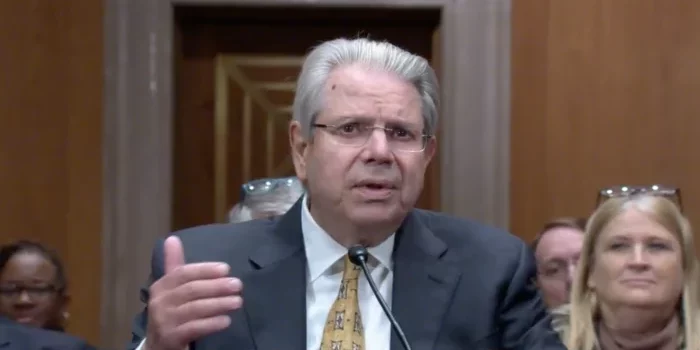() A Ccongressional watchdog told President Joe Biden and Congress on Thursday that the federal government is on an “unsustainable long-term fiscal path.”
The report from the U.S Government Accountability Office comes a week after a Congressional Budget Office report found federal spending is projected to remain unsustainable in the decades to come.
“The federal government faces an unsustainable long-term fiscal path,” according to the U.S Government Accountability Office report.
“We project that debt held by the public as a share of the economy will more than double over the next 30 years and will grow faster than the economy over the long term if current revenue and spending policies are not changed,” it said.
U.S. Comptroller General Gene Dodaro said Congress must take action.
“Congress and the administration must act to move the nation off the untenable long-term fiscal course on which it is currently operating,” said Dodaro, who leads the GAO.
“The federal debt level is growing at a rate that could threaten the vitality of our nation’s economy and the safety and well-being of the American people,” he continued. “Both spending and revenue issues need to be addressed as part of a comprehensive long-term plan.”
The GAO report noted that the nation’s “unsustainable long-term fiscal path poses serious economic, security, and social challenges if not addressed.”
The report notes that the federal government faces growing interest costs on its debt, a factor Marc Goldwein, the senior vice president and senior policy director for the Committee for a Responsible Federal Budget, said deserved attention.
“The interest is going to be our second largest line item,” he told the Center Square. “And that’s partially because we have so much debt, but it’s partially because the interest rates are so high and so we’re paying a lot of money for that money. And we’re not raising taxes or cutting spending to afford that interest.”
The CBO projected interest payments would exceed $1 trillion a year by 2026 and grow to $1.6 trillion by 2034. Over the next decade, interest will total $12.4 trillion – roughly enough money to run the entire federal government for two years. The federal government spent a total of $6.13 trillion in fiscal year 2023.
The GAO report also found that the growing debt could have wide-ranging implications for the nation and the U.S. economy.
“Many of the negative effects of growing debt could intensify over time and create additional challenges for fiscal management,” according to the GAO. “Risks to economic growth and lower investment in the private sector could lead to lower wages due to losses in productivity.”
The GAO has repeatedly asked Congress to come up with a plan to address the government’s fiscal condition.
“Elements of a plan could incorporate well-designed fiscal rules and targets to help manage debt; consider alternative approaches to the current debt limit; assess the drivers or the primary deficit, such as mandatory and discretionary spending and revenue; address financing gaps for Medicare and Social Security; and pursue opportunities to improve fiscal responsibility that do not require major changes to spending and revenue policies,” according to the report.
Congress has taken some steps to try to address the debt, Goldwein said. He pointed to the Fiscal Responsibility Act as a step in the right direction. However, he said more needs to be done.
“Something that I’m encouraged about is there’s a lot of support from both parties for some kind of fiscal commission,” Goldwein said. “And that commission I think, offers a clear-headed opportunity for the parties to come together and try to look at this issue seriously and negotiate it seriously.”

